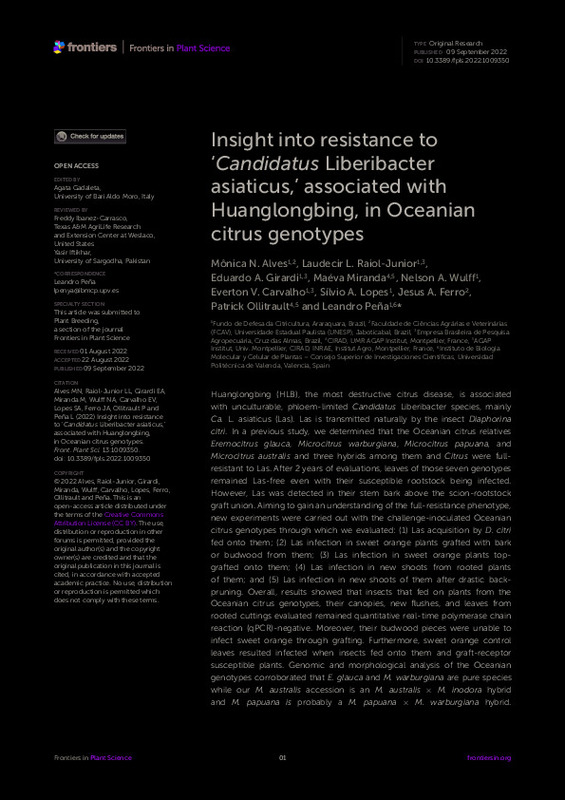JavaScript is disabled for your browser. Some features of this site may not work without it.
Buscar en RiuNet
Listar
Mi cuenta
Estadísticas
Ayuda RiuNet
Admin. UPV
Insight into resistance to 'Candidatus Liberibacter asiaticus,' associated with Huanglongbing, in Oceanian citrus genotypes
Mostrar el registro completo del ítem
Alves, MN.; Raiol-Junior, LL.; Girardi, EA.; Miranda, M.; Wulff, NA.; Carvalho, EV.; Lopes, SA.... (2022). Insight into resistance to 'Candidatus Liberibacter asiaticus,' associated with Huanglongbing, in Oceanian citrus genotypes. Frontiers in Plant Science. 13:1-23. https://doi.org/10.3389/fpls.2022.1009350
Por favor, use este identificador para citar o enlazar este ítem: http://hdl.handle.net/10251/203312
Ficheros en el ítem
Metadatos del ítem
| Título: | Insight into resistance to 'Candidatus Liberibacter asiaticus,' associated with Huanglongbing, in Oceanian citrus genotypes | |
| Autor: | Alves, Monica N. Raiol-Junior, Laudecir L. Girardi, Eduardo A. Miranda, Maéva Wulff, Nelson A. Carvalho, Everton V. Lopes, Silvio A. Ferro, Jesus A. Ollitrault, Patrick Peña, L | |
| Fecha difusión: |
|
|
| Resumen: |
[EN] Huanglongbing (HLB), the most destructive citrus disease, is associated with unculturable, phloem-limited Candidatus Liberibacter species, mainly Ca. L. asiaticus (Las). Las is transmitted naturally by the insect ...[+]
|
|
| Palabras clave: |
|
|
| Derechos de uso: | Reconocimiento (by) | |
| Fuente: |
|
|
| DOI: |
|
|
| Editorial: |
|
|
| Versión del editor: | https://doi.org/10.3389/fpls.2022.1009350 | |
| Tipo: |
|








